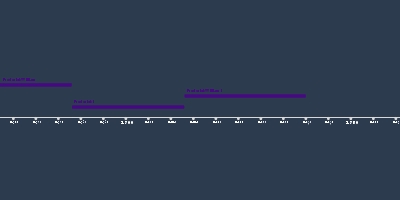The Great Depression (1 янв 1929 г. – 1 янв 1939 г.)
Описание:
This optimism was short-lived. The Great Depression struck the entire world. The crash of the U.S. stock market triggered a worldwide crisis.The American economy had large inequalities in income and a serious imbalance between actual business investment and stock market speculation. Investment fell. Meanwhile, the prices of shares inflated. This stock market bubble was built on borrowed money. When prices started to fall in 1929, these “on margin” buyers had to either put up more money or sell their shares. Thousands sold, creating a financial panic. People started buying fewer goods, prices fell, production slowed, and unemployment rose.
The U.S. had lent large amounts of capital to foreign businesses. American bankers began to recall these loans. Gold was flowing towards the U.S., and Europeans withdrew their savings from banks, leading to financial chaos. Between 1929 and 1933, the global output of goods fell by about 38%. Nations attempted to manage the crisis alone. Britain benefited from going off the gold standard, even though many other nations did the same. Many followed the example of the U.S. in raising protective tariffs and trying to seal off shrinking national markets for domestic producers, which further limited international trade. Many nations lacked the leadership to maintain stability and had poor national economic policy.
Mass unemployment ensued, which caused great social problems. Poverty increased, although in most countries unemployed workers received some sort of benefits to prevent starvation. Homes, ways of life, and morality were disrupted. Marriages were postpones, birthrates fell, and suicide and mental illness increased.
In the U.S., president Franklin Delano Roosevelt sought to reform capitalism in order to save it. He advocated strong government intervention and instituted a broad range of government supported social programs designed to stimulate the economy and provide jobs. By taking the U.S. off the gold standard, devaluing the dollar, and issuing the Agricultural Adjustment Act of 1933, Roosevelt raised prices and therefore increased farm income by limiting agricultural production. The National Recovery Administration Intended to reduce competition among industries by setting minimum prices and wages. It was voluntary but controversial, and was abandoned when declared unconstitutional in 1935. New agencies like the Works Progress Administration aimed to take on employment by creating a vast range of projects. The National Labor Relations Act of 1935 guaranteed rights of collective bargaining, and union membership more than doubled. Roosevelt’s commitment to using the federal government to provide relief welfare marked a profound shift from the traditional stress on family support and community responsibility. Although it had many accomplishments, the New Deal didn’t pull the U.S. out of depression completely.
Добавлено на ленту времени:
Дата:
1 янв 1929 г.
1 янв 1939 г.
~ 10 years
